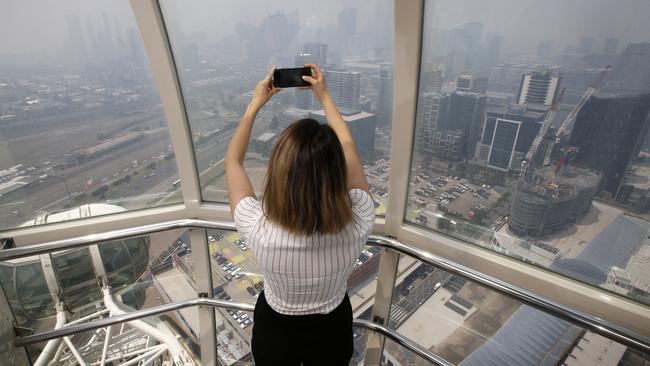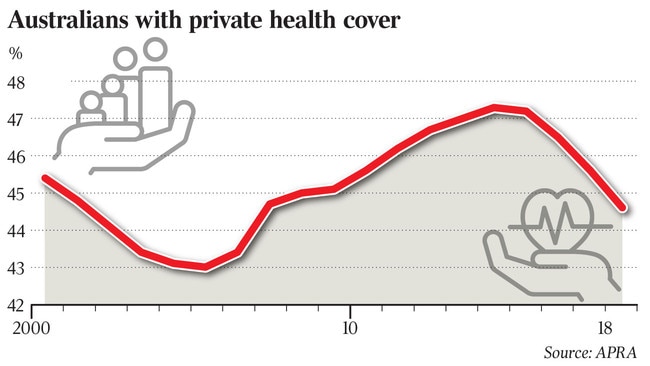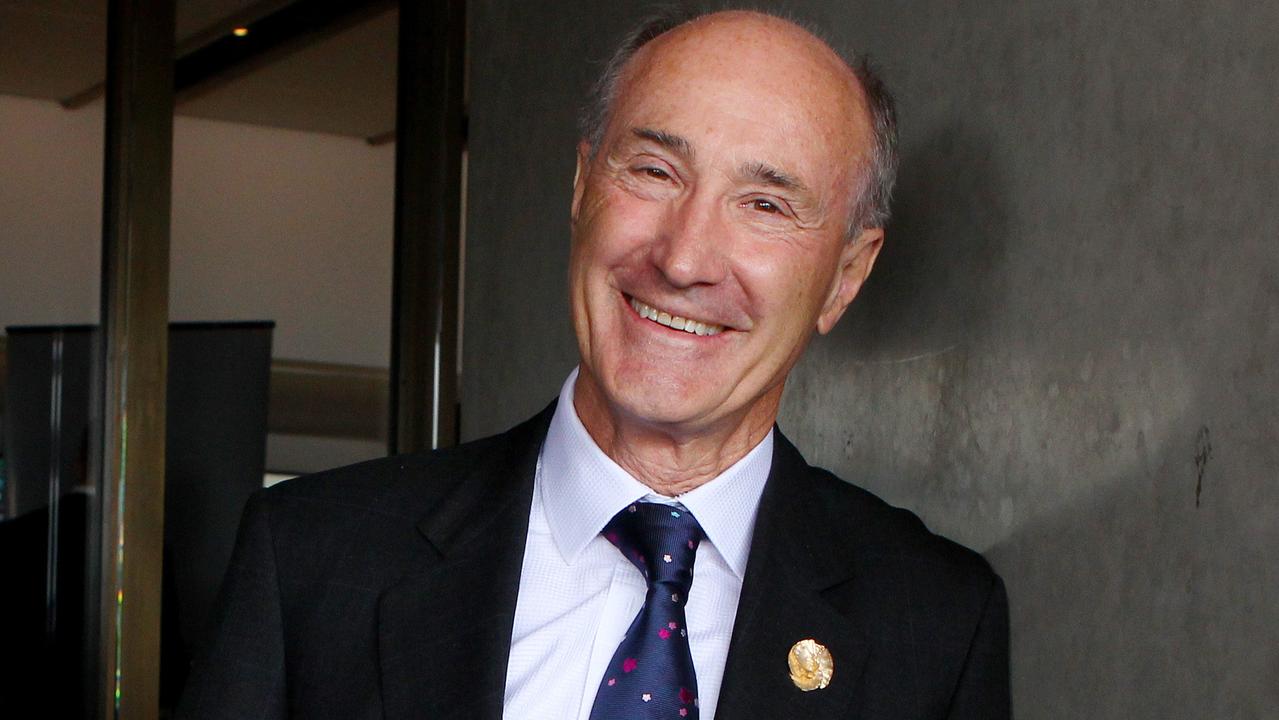Bushfire crisis: Health insurers brace for spike in health claims
Health insurers are anticipating a rise in claims stemming from the bushfire crisis.

Health insurers are bracing for a rise in claims stemming from the nation’s bushfire crisis as doctors warn of the potential long-term effects of breathing in hazardous levels of smoke.
Thick haze — delivering some of the worst air quality in the world — has blanketed Australia’s major capital cities for weeks as bushfires devastate large parts of the country. NSW and Victorian health authorities have issued multiple alerts, urging people to stay indoors, as air quality drops to hazardous levels and has triggered a range of health conditions, including asthma, heart attacks and strokes.
The move is expected to provide another headwind for the private health sector, which is battling intense pressure on profit margins, given surging healthcare costs in the face of political pressure to keep premium increases capped.
While health insurers say it is too early to gauge the full financial impact of the fires, given the lag time it takes hospitals to process claims, they are expecting claim numbers to rise. Many insurers have committed to shorter claim turnarounds and are waiving premiums for at least three months to better assist fire-affected customers.
Bupa Health Insurance managing director Dwayne Crombie said the intensity of the fires raised a question about future preventative health strategies and whether the fire and smoke-related conditions many Australians were experiencing would become the “new norm”.
“It’s too early in the incident to have seen any significant number of claims flowing through yet to private health insurers,” Dr Crombie told The Australian.
“We would expect there will be a number of claims in the future though, related to not only direct physical injuries, but also mental health and respiratory conditions impacted by the air quality.
“There’s also the question beyond this summer and whether these sorts of conditions will become the new norm and what that means for preventive health.”

In NSW, hospital emergency departments have recorded a 34.5 per cent spike in the number of patients with asthma and breathing problems — treating 1115 patients in the week to January 5. This compares to the five-year average of 829 for the same week.
NSW Health has issued 15 health warnings since the start of the bushfire crisis and is distributing 1 million P2 masks — the same mask recommended to protect people against Severe Acute Respiratory Syndrome, or SARS — to bushfire zones.
Medibank’s chief medical officer, Linda Swan, said calls to the health insurer’s nurse helpline relating to respiratory conditions had risen steadily, highlighting the scale and severity of the bushfire season.
In NSW, Medibank’s telehealth service recorded a 72 per cent jump in calls relating to breathing problems during the first week of January compared with the same period last year. Meanwhile in the ACT, respiratory issues accounted for 20 per cent of all calls to Medibank’s helpline, which was three times higher than usual.
Medibank’s Dr Swan said the data was consistent with ongoing fire conditions and the impact on air quality, not only in areas directly affected by bushfires but also in places hundreds of kilometres away.
“When air quality is poor, it’s important that people follow their doctor’s advice about any possible health impacts, avoid vigorous outdoor activity and reduce their exposure by staying indoors as much as possible with the doors and windows closed,” she said.
In Victoria, Morwell-based health insurer Latrobe Health Services — the core membership of which is in East Gippsland, where the navy evacuated residents and tourists from fire-ravaged areas — expected a rise in claims relating to mental health as well as physical conditions relating to the fires.
“We are yet to see the full extent of health-related impacts this fire emergency has had on our communities and it won’t be until we move into recovery and rebuilding that we really see the full impacts,” Latrobe Health Services chief executive Ian Whitehead said. “We do know from past events it will be as much about mental health and wellbeing as physical health. We anticipate a significant rise in claims for mental health and cardiac-related procedures. Of course, there will also be economic impacts.
“We’re investigating bringing additional services into the area that support potential respiratory and allergy impacts that might come from this.”
David Brajkovic, executive general manager of Australian Unity’s health insurance business, said it would take up two months to understand how the bushfires had affected claims.
“Usually it takes six to eight weeks before we see hospital claims submitted and we don’t know the reason for their hospital admission, just what was done in the hospital,” Mr Brajkovic said.
“At the end of the quarter we will run a report that looks at claims trends and at that point we may see a higher number of claims for asthma or other smoke, fire, anxiety, mental health-related conditions.”
A study of the impact of bushfires by UK insurance market Lloyds after Victoria’s 2009 Black Saturday fires concluded there “may also be repercussions on health insurance because of secondary health problems caused by smoke, smog, burns or even water contamination from the fire”.
Australian Medical Association president Tony Bartone said doctors had been treating patients for a range of smoke and fire-related conditions. But there were unrelated medical conditions that arose during natural disasters as well. “It won’t surprise you that they have been treating anything and everything,” Dr Bartone said.
“There are medical conditions that keep on occurring and if anything during times of disaster, stress creates further things to go astray. People don’t take their medications regularly, they lose them, they leave them behind in the rush, there are heap of reasons why everything and anything will come through the door.”
Dr Batone was concerned about the longer-term effects of inhaling hazardous smoke that he said would not be known until all the medical data was collated and assessed following the crisis.
Bupa, which also runs aged-care homes, has evacuated about 200 residents from smoke and fire-affected areas including Eden (NSW south coast), Tumut (Riverina, NSW) and Eastwood/Bairnsdale (East Gippsland, Victoria) to other Bupa aged-care facilities and alternative accommodation.




To join the conversation, please log in. Don't have an account? Register
Join the conversation, you are commenting as Logout